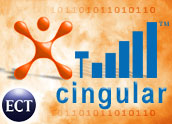
IBM is using its influence in the IT arena to create the world’s largest-ever grid computing system. The company envisions 10 million participants donating computing cycles to the World Community Grid, which is designed for use in scientific and environmental research projects.
The Human Proteome Folding Project will be the first to take advantage of the system, in which participants download software to their machines to perform computationally intensive research problems.
The Institute for Systems Biology (ISB), which is conducting the research, said the project will help predict the shape of human proteins. Understanding proteins and the way they fold into the shapes that determine their behavior may help scientists learn more about the cause of diseases such as AIDS and cancer and potentially lead to cures.
More Power, Focus
Built with United Devices, a supplier of grid software and services, the World Community Grid differs from existing projects such as Seti@home, according to Robin Willner, director of IBM Corporate Community Relations. The major differences are its scale and the advisory board who will help determine how the compute power is distributed, Willner told TechNewsWorld.
The grid, which is housed on IBM eServer p630 and x345 systems and uses Shark Enterprise Storage Server running DB2 on AIX and Linux, can handle 10 million participants, but Willner said that IBM is committed to expanding the system if participation warrants it.
“We have an aggressive campaign with universities, professional associations and our business partners to encourage people to participate,” Willner said. IBM employees are also being asked to download the software from www.worldcommunitygrid.org.
Choosing Projects
The advisory board comprises health science, technology and philanthropy experts from such organizations at the National Institute of Health, the U.S. Environmental Protection Agency, the World Health Organization and the McArthur Foundation.
“The board will help choose research projects to get most out of the infrastructure,” Willner said. “We want to look at: What are significant issues? What is research that is stalled or languishing because the compute power wasn’t there? What are critical issued that need to be addressed?”
No Hackers Worries Yet
To allay security fears some may have about allowing the outside to access their computers, Willner said, “We have every security possible on this site at the server end and the client end.”
She said that IBM’s team of “ethical hackers” has tried to get into the system and has not been able to. The group will continue its efforts if new threats arise.
IBM hopes to choose five or six projects a year. The company opened its proposal process today and applications can be downloaded from the Web site.






















































The Human Protein Folding Project has been a real success to date with over 48,000 members, contributing over 69,000 computers
Currently they have achieved over 3,000 years of processing time towards the project and returned 1,765,954 results
A follow up story would generate a much needed infusion of members to the Human Protein Folding Project at http://worldcommunitygrid.org
I would be happy to furnish you with all the relevant information required to enable you to do a follow up story on the progress of this humanitarian effort
Please Email me to confirm your interest in running a follow up story
Best regards
Graham A. Hood